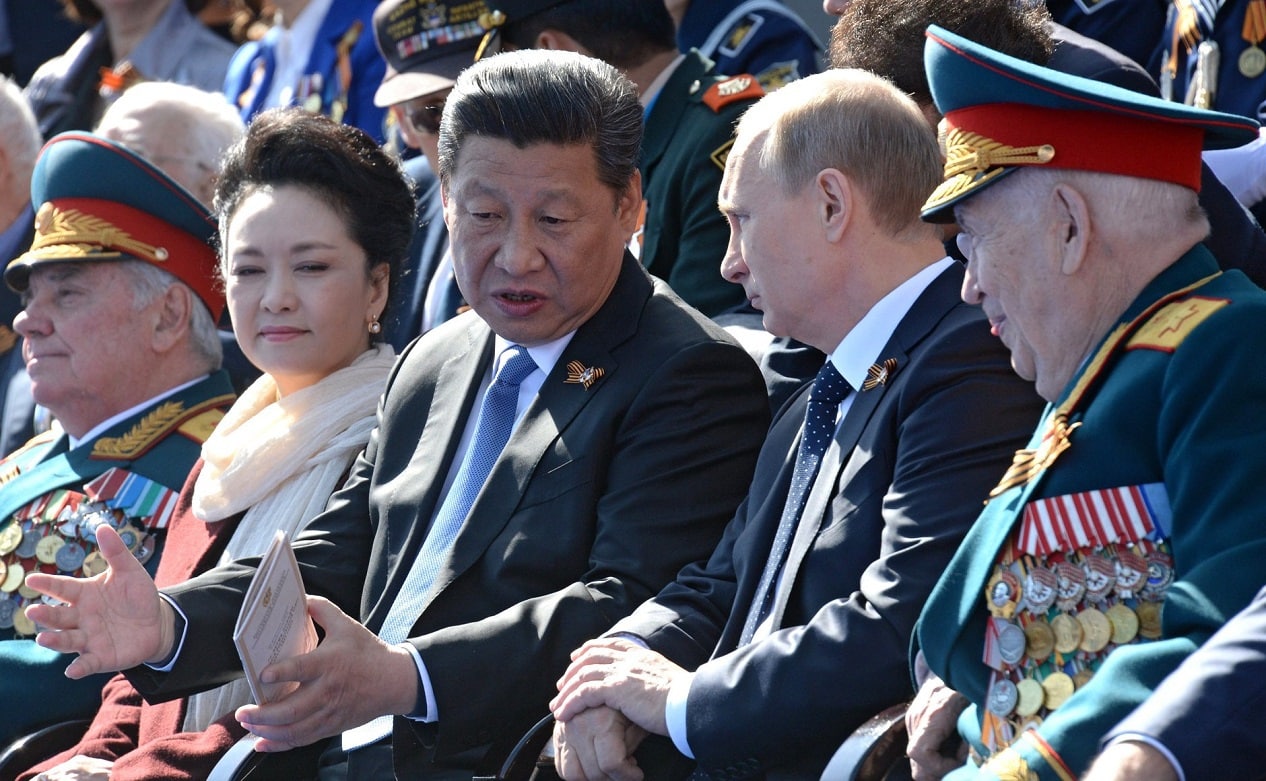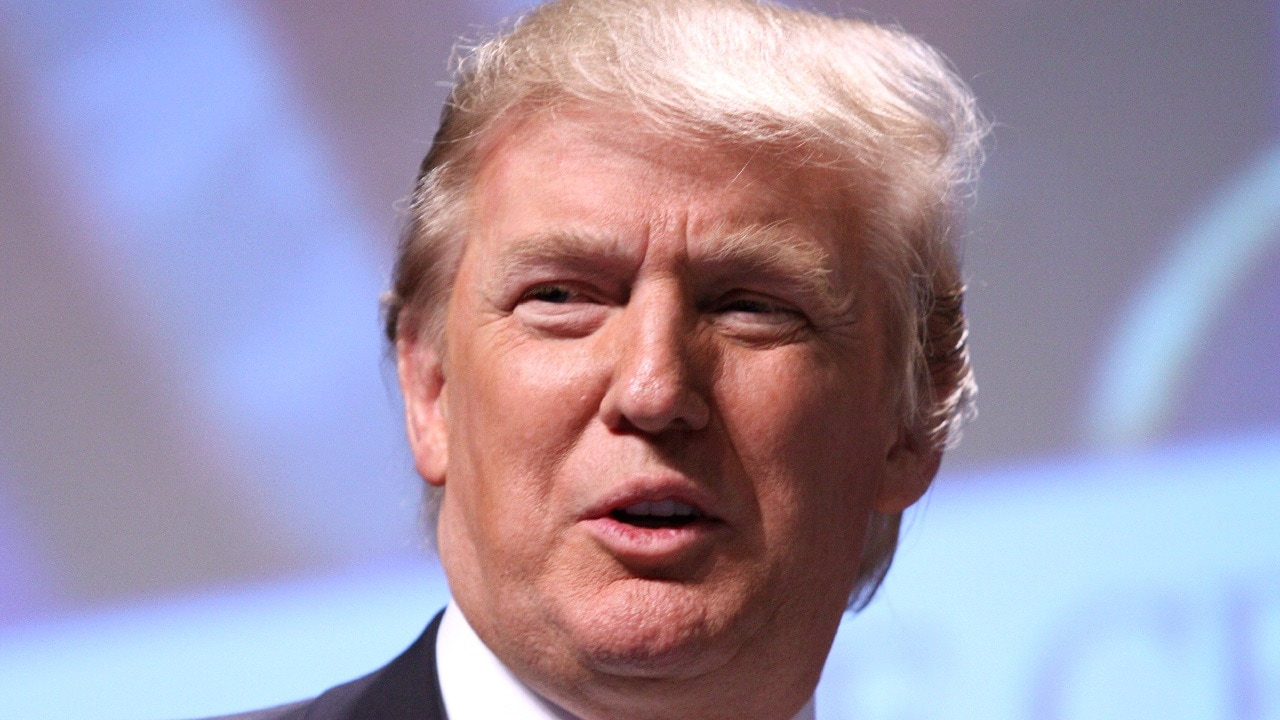Donald Trump’s so-called “Liberation Day” wasn’t a policy rollout. It was a funeral announcement.
The 34% tariff slapped on Chinese imports may have been framed as tough-on-China trade policy.
But that wasn’t the real aim. Trump wasn’t going after Beijing so much as he was firing the opening salvo in a campaign to tear down the postwar international economic order—the same order the United States built, led, dominated, and disproportionately benefited from for nearly eighty years.
Forget the surface-level complaints about trade deficits or stolen IP. Trump has moved beyond those arguments. He’s not interested in fixing the rules. He wants to torch the entire structure. The goal isn’t reform. It’s rupture.
And the world Trump is trying to usher in? It looks less like Reagan’s Cold War capitalism than something out of the interwar 1930s: a harsh, nationalist, power-based system, where institutions don’t matter and the strong set the terms. This isn’t a reset. It’s a return—one that breaks faith with the liberal internationalism that anchored American primacy for generations.
Antonio Gramsci’s warning couldn’t be more relevant: “The old world is dying, and the new world struggles to be born. Now is the time of monsters.” Trump isn’t a glitch in the system. He’s the product of a world where the old order is collapsing—and where nothing coherent has yet replaced it. That makes him both symbol and agent of the disorder – a Gramscian monster.
The old order wasn’t perfect. It wasn’t neutral. It wasn’t even fair, at times. But it worked—for us. The postwar liberal system, anchored by U.S. power, created a web of rules and institutions that tilted the global economy in America’s favor. The WTO, the dollar system, multilateral trade deals—these weren’t acts of benevolence. They were strategic instruments. They gave us leverage. They tied others to our terms.
Trump sees none of that. He sees weakness where others saw strength. He sees cooperation as betrayal. He treats alliances like scams. His answer is to scrap the whole framework and replace it with nothing but raw, bilateral muscle. Tariffs, threats, deals, and more threats.
This isn’t strategy. It’s wreckage in slow motion.
The tariff campaign is just the tool. The real project is deeper: to break U.S. dependence on multilateral rules and shift us toward something harder, narrower, and more combative. That’s not just about China. That’s about everything—about USCMA, about NATO, about the G7. Trump doesn’t want America embedded in systems. He wants America alone, swinging.
What he doesn’t seem to grasp is what happens next.
Beijing isn’t scrambling. It’s moving with purpose. China has spent years preparing for this. It has alternate markets. It has parallel institutions. It has a Belt and Road. Trump’s tariff barrage didn’t catch them flat-footed—it gave them the narrative they wanted. America is volatile. America is unmoored. America is breaking things it once built.
China steps in as the opposite: calm, stable, open to business. Not democratic, not liberal—but dependable. For countries burned out on American unpredictability, that pitch is landing.
Meanwhile, we’re punching ourselves in the face. U.S. firms that rely on Chinese parts—tech, energy, defense, you name it—are facing rising costs and broken supply chains. This isn’t strategic decoupling. It’s economic chaos. And there’s no backup plan.
Trump insists he’s bringing jobs home. But this isn’t how you do it. Tariffs alone don’t rebuild industry. Especially not when they’re dropped on companies with no warning and no time to adjust. All this does is create uncertainty, raise prices, and push some firms toward collapse.
And then there’s the global picture. Allies who might’ve joined a coordinated effort to pressure Beijing are backing off. They don’t see leadership. They see volatility. Trump’s America doesn’t act like an anchor. It acts like a rogue actor. And in a world looking for stability, that’s a problem.
This is the heart of the danger: in trying to punish China, Trump is weakening the only system that ever gave the U.S. real leverage over it. If we exit that system, or blow it up from the inside, China doesn’t have to defeat us. It just has to wait us out.
Trump thinks he’s playing hardball. But what he’s really doing is giving up the game.
China doesn’t need to conquer the world. It just needs to present itself as the more stable option. And right now, it is. The yuan is spreading in trade. The BRICS are expanding. Global South states are increasingly tied into China’s orbit, not because they trust it, but because they no longer trust us.
The old system—built around U.S. economic leadership, the dollar, and open markets—won’t survive many more blows like this. Once supply chains move, they don’t snap back. Once trade routes shift, they harden. Once trust is gone, it doesn’t return on command.
And let’s not pretend Trump is building a new system in its place. There’s no coherent framework, no vision for the future. There’s just a cascade of tariffs, threats, and appeals to a lost manufacturing golden age that isn’t coming back. The result? A smaller, meaner U.S. role in the world economy—and a larger space for China to fill.
That’s what “Liberation Day” really was. Not liberation from Chinese imports. Liberation from the system that made America powerful. Trump doesn’t want to lead it. He wants out of it. But power abhors a vacuum. If Washington walks away, someone else will step in – someone else will build, lead and police the successor economic order. And that someone will likely be Beijing.
And here’s the tragedy: it didn’t have to go this way. The U.S. still has the capacity to lead. We have unmatched innovation, capital, talent, and reach. What we lack is strategy. What we lack is the discipline to shape a new order instead of torching the old one in a fit of frustration.

Chinese President Xi Jinping with the first lady during the Moscow Victory Day Parade on 9 May 2015.
This is the Gramscian moment—an interregnum, full of wreckage and reaction. The old is dying. The new hasn’t arrived. And in between, the monsters roam.
Trump isn’t an answer to this disorder. He is its avatar. The tariffs are just the symptom. The disease is a deeper breakdown of belief—in systems, alliances, and the idea that leadership requires more than anger.
“Liberation Day” wasn’t a turning point. It was the death knell of the post-War liberal economic order.
About the Author: Dr. Andrew Latham
Andrew Latham is a non-resident fellow at Defense Priorities and a professor of international relations and political theory at Macalester College in Saint Paul, MN. Andrew is now a Contributing Editor to 19FortyFive, where he writes a daily column. You can follow him on X: @aakatham.

